Spring 5.x 源码之旅三十七之MergedBeanDefinitionPostProcessor扩展点
图不能少
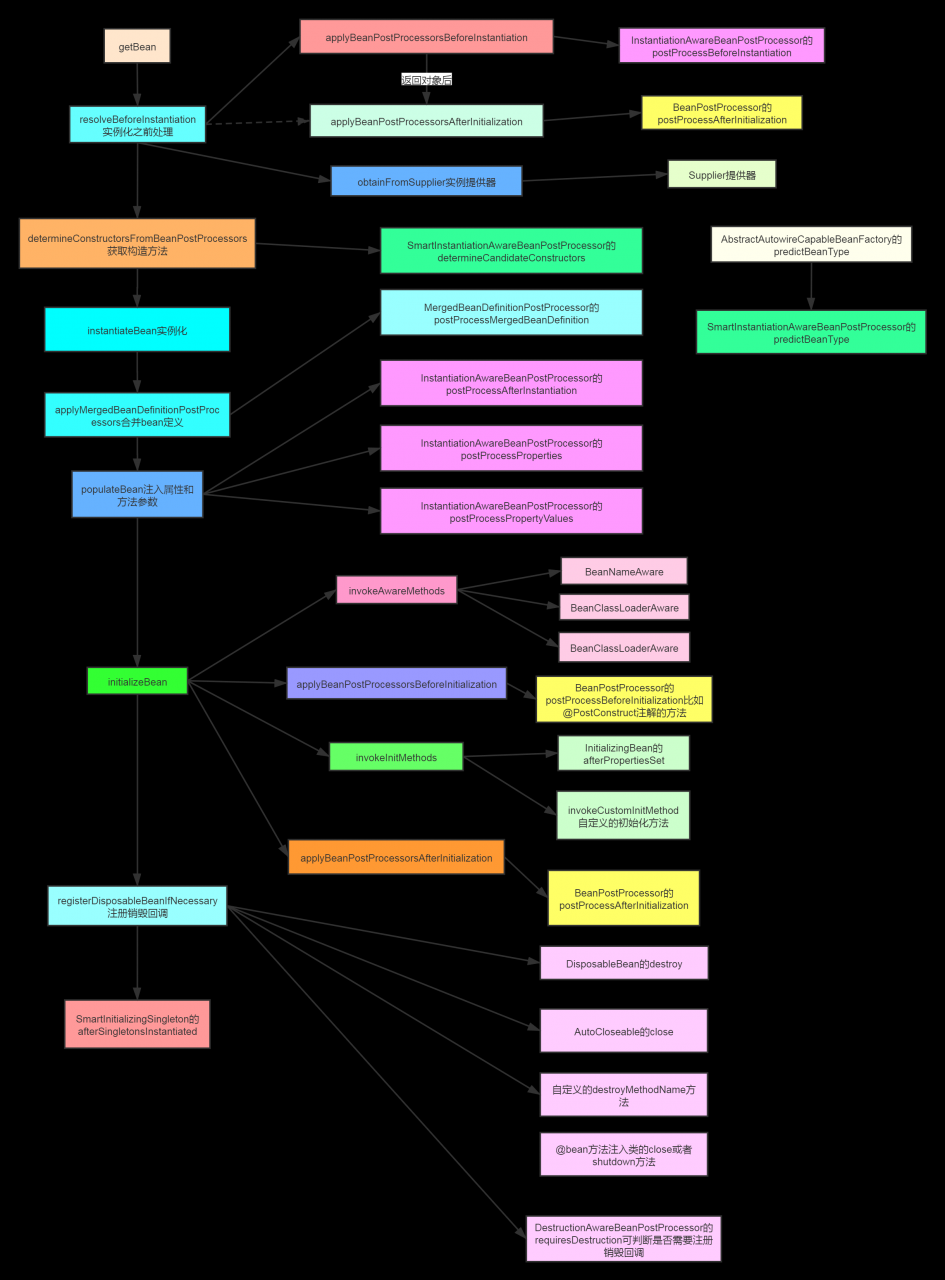
applyMergedBeanDefinitionPostProcessors
在实例化之后,合并bean定义,其实就是更新bean定义啦,这里可以再次修改bean定义,这里只能修改RootBeanDefinition类型的。前面说过了,主要还是InitDestroyAnnotationBeanPostProcessor,CommonAnnotationBeanPostProcessor和AutowiredAnnotationBeanPostProcessor处理有注入注解的属性或者方法。分别去处理生命周期PostConstruct,PreDestroy注解,Resource,WebServiceRef,EJB注解,Autowired和Value注解。
applyBeanPostProcessorsAfterInitialization
其实这个可以和上面那个配合,比如上面那个做一些处理,这个后面就可以用,我们下面来做简单的子类看看。
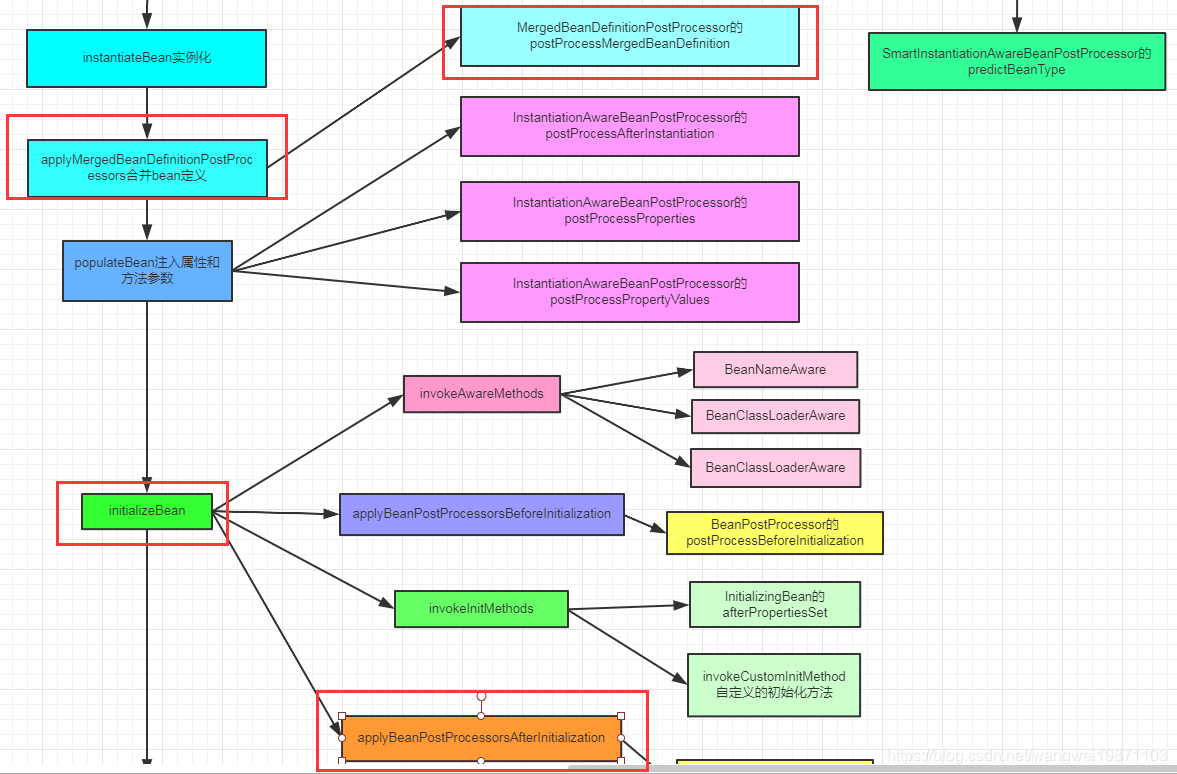
扩展点实战
我想定义一个注解,注解上有个属性,就是要打印方法的次数,我希望能找到所有这个属性定义的方法,然后打印他们。
MyAnnotation注解
属性count就是打印的次数。
@Target(ElementType.METHOD)
@Retention(RetentionPolicy.RUNTIME)
public @interface MyAnnotation {
int count() default 0;
}
MyMergedBean
我们注解一些方法, 看看他会不会打印。
@Component
public class MyMergedBean {
@MyAnnotation(count = 1)
public void m1(String msg) {
print(msg);
}
@MyAnnotation(count = 2)
public void m2(String msg) {
print(msg);
}
@MyAnnotation()
public void m3(String msg) {
print(msg);
}
private void print(String msg) {
System.out.println(msg);
}
}
MyMergedBeanDefinitionPostProcessor 处理器
这里主要是实现了postProcessMergedBeanDefinition,做了实例化之后的处理,然后在初始化后postProcessBeforeInitialization具体进行处理。主要是打印有注解的方法,根据注解的属性。
@Component
public class MyMergedBeanDefinitionPostProcessor implements MergedBeanDefinitionPostProcessor {
//bean名字对应的注解方法
public Map<String,List<Method>> stringMethodMap;
@Nullable
private Class<? extends Annotation> myAnnotationType;
public MyMergedBeanDefinitionPostProcessor(){
myAnnotationType=MyAnnotation.class;
stringMethodMap=new HashMap<>();
}
@Override
public void postProcessMergedBeanDefinition(RootBeanDefinition beanDefinition, Class<?> beanType, String beanName) {
List<Method> list=new ArrayList<>();
ReflectionUtils.doWithLocalMethods(beanType, method -> {
if (this.myAnnotationType != null && method.isAnnotationPresent(this.myAnnotationType)) {
list.add(method);
stringMethodMap.put(beanName,list);
}
});
}
@Override
public Object postProcessBeforeInitialization(Object bean, String beanName) throws BeansException {
if(stringMethodMap.get(beanName)!=null){
for (Method method : stringMethodMap.get(beanName)) {
try {
MyAnnotation annotation = (MyAnnotation) method.getAnnotation(this.myAnnotationType);
for (int i = 0; i < annotation.count(); i++) {
method.invoke(bean,new Object[]{method.getName()});
}
} catch (IllegalAccessException e) {
e.printStackTrace();
} catch (InvocationTargetException e) {
e.printStackTrace();
}
}
}
return bean;
}
}
测试类
@Test
public void MergedBeanDefinitionPostProcessorTest() throws Exception {
AnnotationConfigApplicationContext applicationContext = new AnnotationConfigApplicationContext();
applicationContext.register(MyConfig.class);
applicationContext.refresh();
}
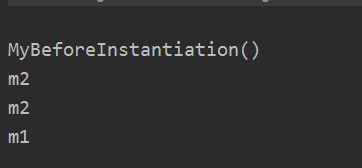
我再改改:
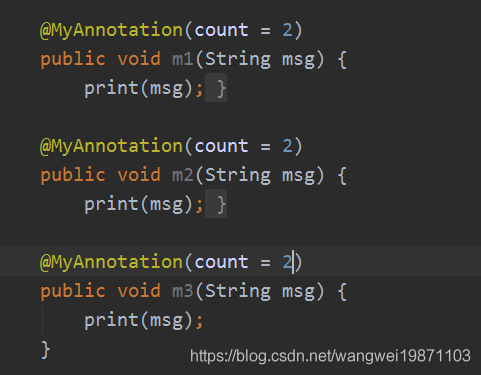
结果:
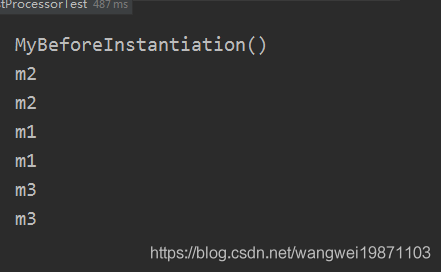
为什么不是按定义顺序执行呢,好像是因为JDK反射拿出来就是无序的,如果要有序可以用CGLIB的ClassVisitor来拿,具体spring源码里有,可以参考ConfigurationClassParser的retrieveBeanMethodMetadata:
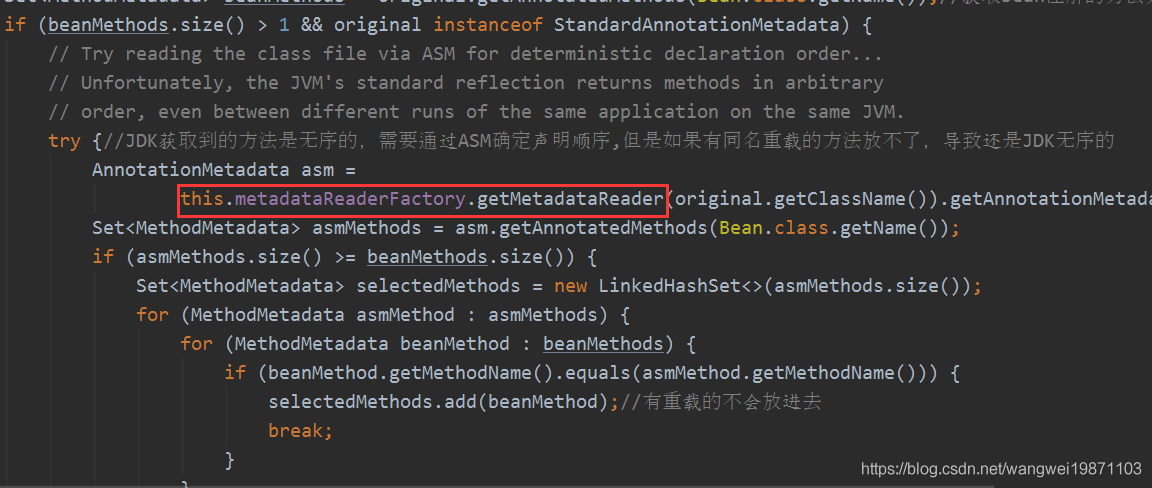
好了,MyMergedBeanDefinitionPostProcessor到底有什么用呢,就看你的业务啦,只要你想在实例化后做扩展,就可以尝试用这个,参与bean的初始化的过程。
好了,今天就到这里了,希望对学习理解有帮助,大神看见勿喷,仅为自己的学习理解,能力有限,请多包涵。